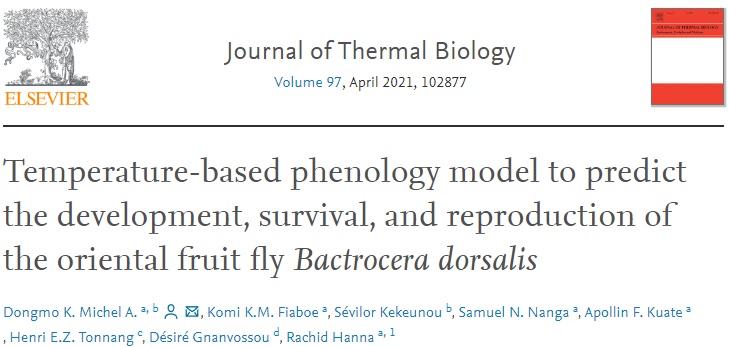Abstract
The oriental fruit fly Bactrocera dorsalis (Diptera: Tephritidae) is a major pest of fruit and vegetable production systems on several continents. The pest has invaded many countries, causing considerable impact on fruit production systems and commercialization. In this study we determined the relationship between temperature and development, survival and reproductive parameters of B. dorsalis on an artificial diet under laboratory conditions under 7 constant temperatures (10, 15, 20, 25, 30, 33 and 35 °C) with 70 ± 10% relative humidity and a photoperiod of L12:D12. We validated the laboratory results with a full life table analysis under semi-natural conditions in a screenhouse. We used the Insect Life Cycle Modeling (ILCYM) software for all mathematical models and simulations applied to all life history parameters. Bactrocera dorsalis completed its development at temperatures ranging between 15 and 33 °C with the mean developmental time of egg, larva, and pupa ranging between 1.46 and 4.31 days, 7.14–25.67 days, and 7.18–31.50 respectively. The models predicted temperatures ranging between 20 and 30 °C as favorable for development and survival, and 20 to 25 °C for optimal fecundity of B. dorsalis. Life table parameters showed the highest gross reproductive rate (GRR), net reproductive rate (Ro), intrinsic rate of increase (rm), and finite rate of increase (λ) between 25 and 31 ᵒC while generation time (T) and doubling time (Dt) were low at this interval. The effects of future climate change on B. dorsalis life history parameters were further investigated and the outcome from this study will help in the management of B. dorsalis in different agroecologies in the context of ongoing climate change.

